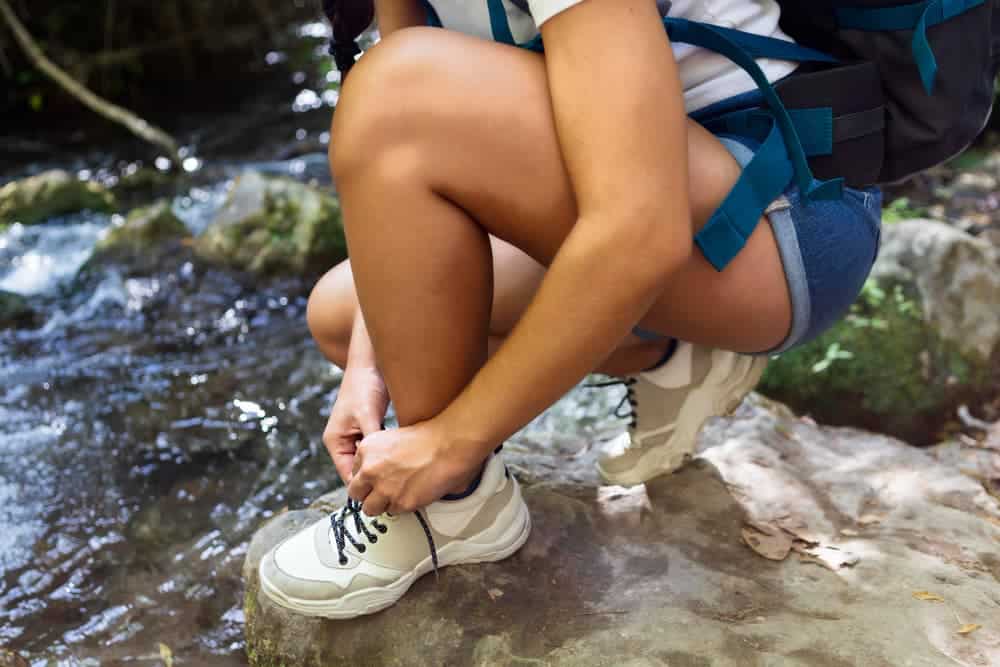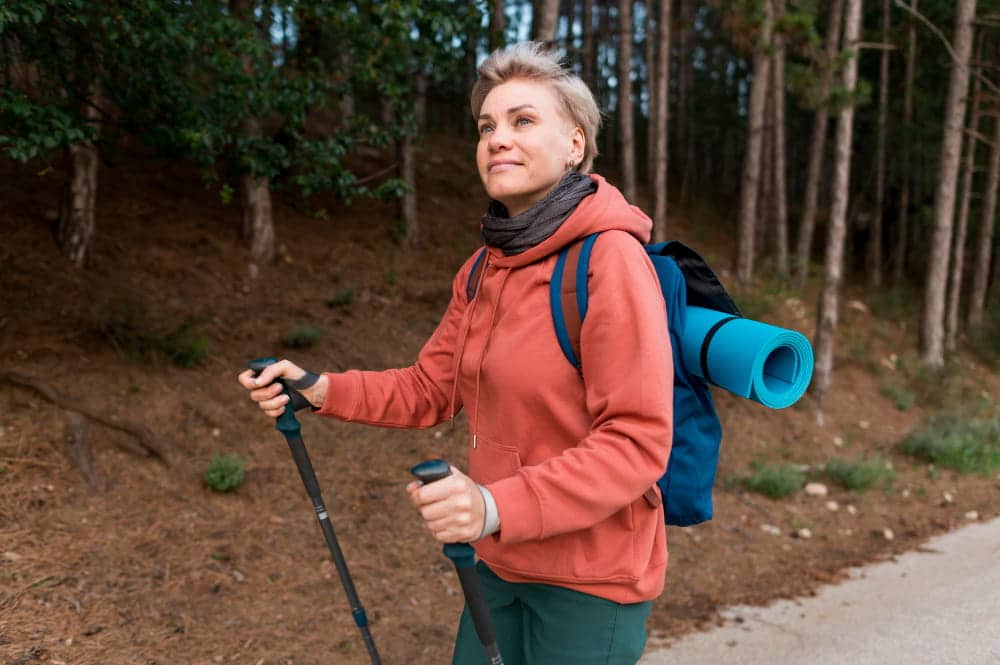
If you decide to walk the Camino de Santiago, your body will be your best ally. However, walking for hours with weight on your back has a direct impact on your joints. Knees, ankles, and hips absorb every step, and without proper care, the pain can ruin the experience.
To avoid discomfort and injury, here are some practical tips to help you complete the route without your knees holding it against you.
Índice de contenidos
- 1 Consider the differences between the Camino routes
- 2 Choose the right footwear for the journey
- 3 Distribute the weight in your backpack properly
- 4 Do warm-up exercises before walking
- 5 Control your pace and don’t overload your body
- 6 Maintain proper posture while walking
- 7 Stay hydrated and eat well to prevent inflammation
- 8 Don’t ignore your body’s signals
- 9 Take time to recover after each day’s walk
- 10 Strengthen muscles before starting the Camino
- 11 Avoid hard surfaces whenever possible
Consider the differences between the Camino routes
The impact on your joints depends on the route you choose. For example:
- The French Way from Sarria features gentle but consistent slopes. This route is ideal for beginners. Even so, the repetitive motion can tire your knees if you’re not wearing proper footwear.
- The Camino de Santiago from Tui has moderate slopes and a good mix of urban and rural sections, which helps reduce continuous impact on knees and ankles. It’s a gentle and accessible option.
- The Primitivo Way is one of the most physically demanding. It includes constant ascents and descents that can be tough on your joints if you’re not well prepared or don’t use walking poles.
- The Camino de Santiago from Bilbao features uneven terrain, with demanding climbs and steep descents. This increases the strain on joints and requires greater muscle strength and balance.
- The Ribadeo Camino de Santiago combines coastal stretches and dirt tracks. Humidity and wind can affect stability, leading to strain on ankles and knees.
- The English Way mixes paved sections with rural areas. Hard tarmac can increase joint impact if your shoes don’t offer good cushioning.
If you’d rather avoid surprises, we recommend contacting a Camino de Santiago travel agency to help you choose the best route based on your physical condition.
Choose the right footwear for the journey

Not just any pair of hiking boots will do. They must provide good cushioning, stability and support. Make sure they are waterproof but breathable. Shoes should fit well without being too tight.
Walking in brand-new shoes is a bad idea as they can cause chafing and blisters. Use orthopaedic insoles if you have arch issues or suffer from plantar fasciitis. It’s also wise to carry a second, lighter pair for urban sections or when resting.
Distribute the weight in your backpack properly
Unevenly distributed loads increase joint strain. Your backpack should not exceed 10% of your body weight. Place heavy items close to your back and as high up as possible.
Adjust the straps correctly to prevent the backpack from shifting as you walk. If you have knee issues, using trekking poles can reduce joint pressure by up to 20%. Poles also improve balance and reduce the risk of injury.
Do warm-up exercises before walking

Stretching before starting the day can make a difference in your mobility and well-being. Spend a few minutes mobilising the joints with gentle, progressive exercises. Start with circular movements for the ankles, bend and stretch the knees, and rotate the hips to activate the lower back.
It’s also helpful to include light squats, heel raises, and leg swings to prepare the muscles. Similarly, stretching your arms and back will help improve your posture while walking.
A good warm-up routine reduces stiffness, improves circulation, and prevents overloads in the first few kilometres, allowing you to enjoy a more comfortable and safer walk.
Control your pace and don’t overload your body
Enthusiasm can work against you if you walk too fast or try to cover more distance than recommended. A steady and moderate pace protects the joints and prevents wear and tear. If you feel pain in your knees or ankles, slow down and take regular breaks. Listen to your body and respect recovery times.
Maintain proper posture while walking

Poor posture can affect body alignment and create unnecessary tension in the joints, causing long-term discomfort. To avoid this, keep your back straight, your shoulders relaxed, and your head upright with your gaze forward.
Distribute the weight evenly on both legs and avoid leaning too far forward, as this increases pressure on the knees and can affect balance.
Maintain a natural step, first landing with the heel, then the ball of the foot. If you use trekking poles, adjust their height so that your elbows form a 90-degree angle when leaning on them, which will improve stability and reduce the impact on the joints.
Stay hydrated and eat well to prevent inflammation
Joints suffer more when the body is dehydrated. Drink water regularly and avoid sugary drinks.
A balanced diet with protein, fruits, and vegetables helps keep muscles strong and joints healthy. Omega-3, found in fish, walnuts, and chia seeds, is a great ally in reducing inflammation.
Don’t ignore your body’s signals
If you feel persistent discomfort, don’t keep walking without addressing it. Applying cold to the affected area can reduce inflammation. A compression bandage or knee braces can provide support and stability. If the pain persists, seek medical attention. Ignoring your body’s signals can worsen an injury and force you to abandon the route.
Take time to recover after each day’s walk
Finishing a day of walking doesn’t mean the joints are no longer at risk. It is essential to do a recovery routine to prevent discomfort and improve performance the next day. Elevating your legs for a few minutes promotes circulation and reduces swelling.
Apply cold or anti-inflammatory creams to help reduce swelling and relieve possible pain in the feet and knees. A self-massage with gentle movements improves muscle relaxation and prevents stiffness. Additionally, performing gentle stretches before bedtime helps flexibility. Finally, resting adequately and getting enough sleep allows the body to fully recover.
Strengthen muscles before starting the Camino
The stronger your muscles, the less impact the joints will suffer. Weeks before starting the Camino, do strengthening exercises. Squats, stretches, and cycling are good options. Strengthening the leg muscles, especially the quadriceps and calves, provides greater stability and endurance.
Avoid hard surfaces whenever possible
Asphalt and concrete can increase the impact on the joints, which in the long run can cause discomfort or injuries, especially in the knees and ankles. To reduce this risk, always choose dirt paths, natural trails, or softer surfaces that absorb impact better.
If you walk in urban areas and cannot avoid the pavement, look for alternatives such as parks, gravel paths, or grassy areas.









